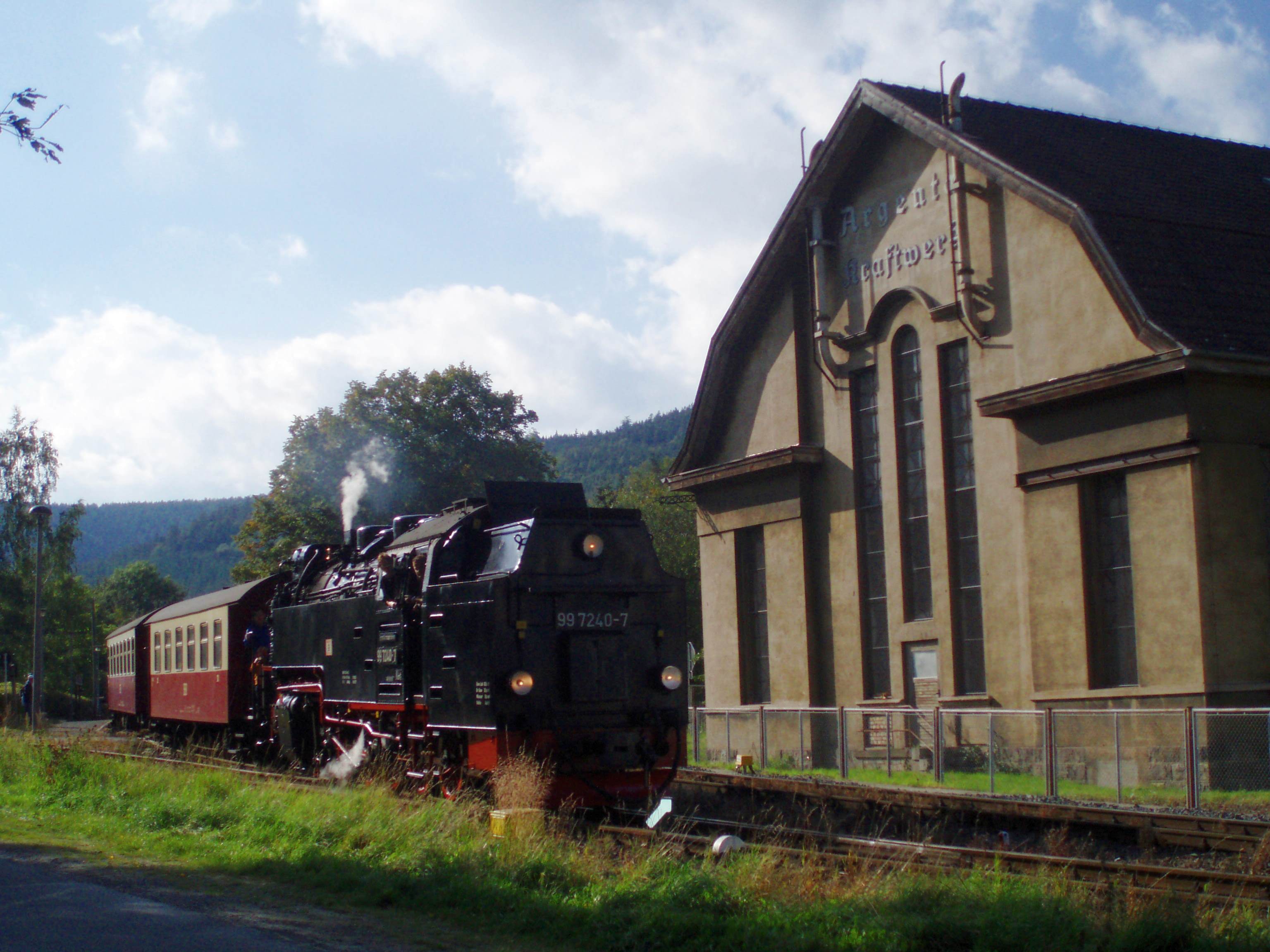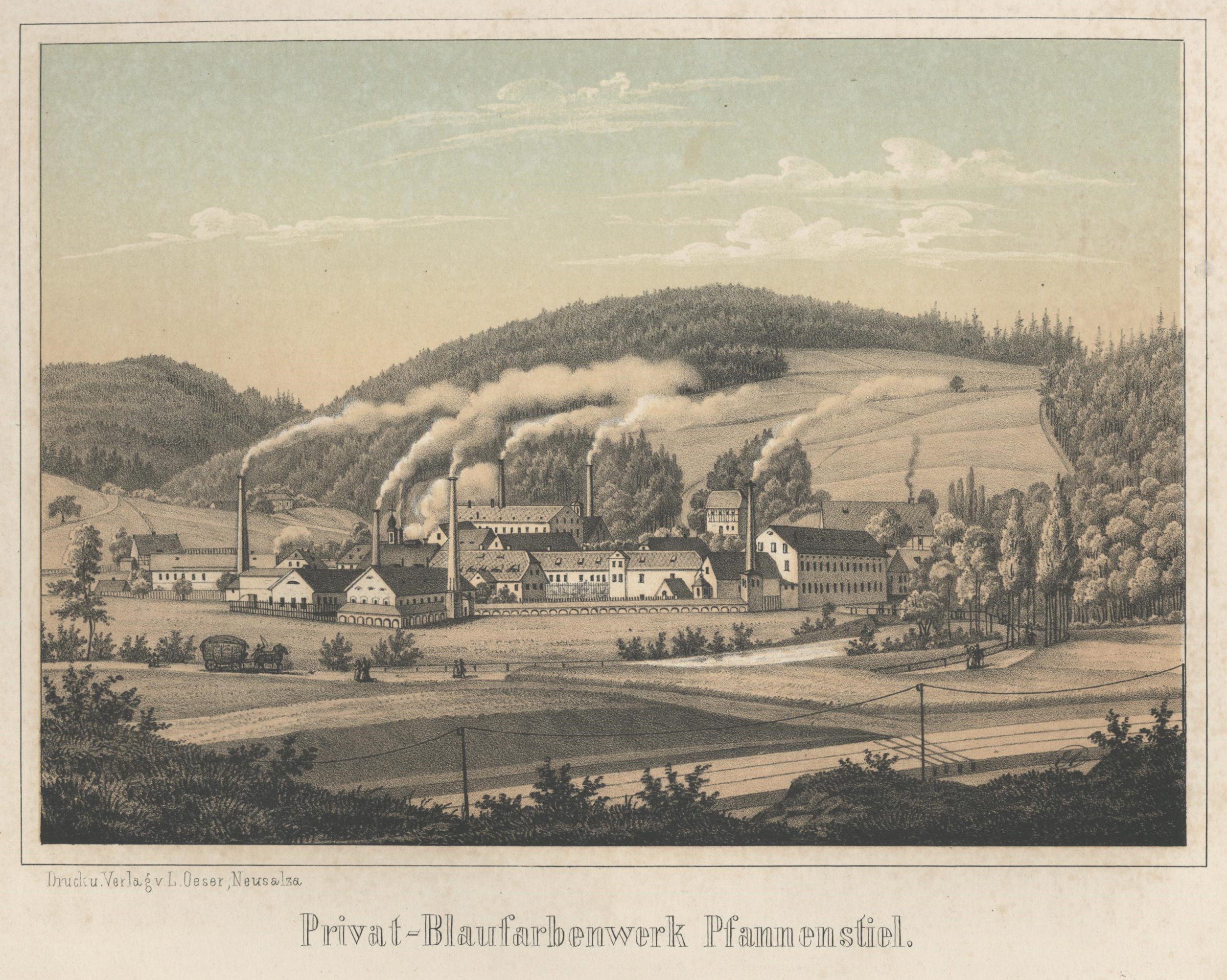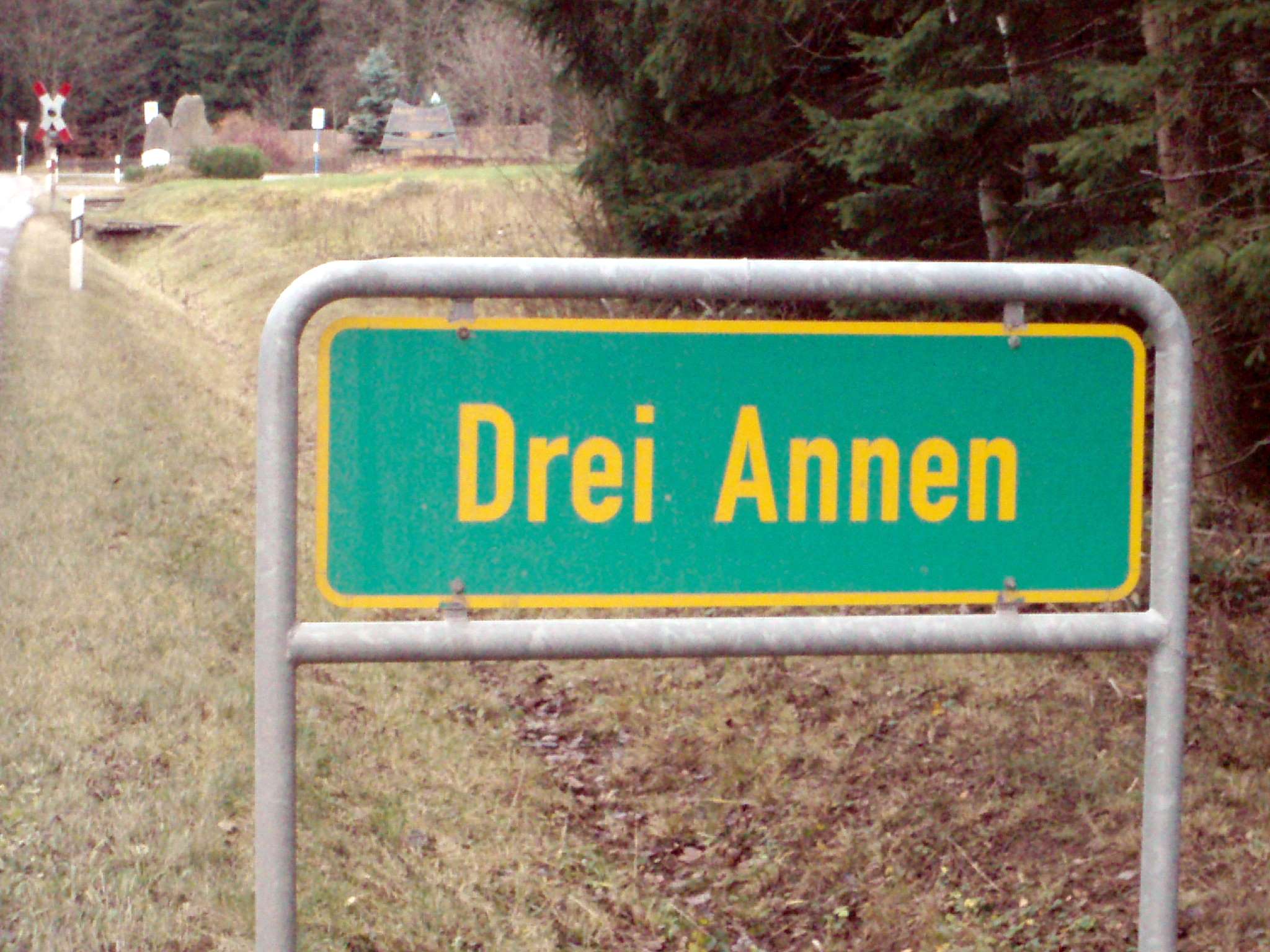|
Hasserode
Hasserode has been a quarter in the town of Wernigerode in the German state of Saxony-Anhalt since 1907. Location Hasserode lies at the foot of the Harz Mountains in the valley of the River Holtemme, whose upper reaches include the water cascade of the Steinerne Renne. A state road ('' Landstraße'') runs through the quarter to Drei Annen Hohne and Schierke in the direction of the Harz's highest mountain, the Brocken. The Harz Railway and Brocken Railway, part of the Harz Narrow Gauge Railways also run through the district which has three stations: Hochschule Harz (formerly Kirchstraße), Wernigerode-Hasserode and Steinerne Renne. History The village grew up around Hasserode Castle in the 12th century, but was abandoned by the 16th century and was only reoccupied again in 1768 by order of King Frederick II of Prussia, hence the name ''Friedrichsthal'' for the lower part of the parish and the village name of Hasserode-Friedrichsthal which has been used from time to time. ... [...More Info...] [...Related Items...] OR: [Wikipedia] [Google] [Baidu] |
Hasserode Castle
Hasserode Castle (german: Burg Hasserode) in the quarter of the same name in the town of Wernigerode am Harz was a medieval fortification whose site is near Hasserode station on the Harz Narrow Gauge Railways. Today there are no visible traces left of the castle. Early history The archival documented history of the Harz forests around the once independent municipality of Hasserode, that has been part of the borough of Wernigerode since 1907, go well back into the Middle Ages. Originally, this wooded region belonged to an imperial forest before it was Enfeoffment, enfeoffed by the Holy Roman Emperor, Holy Roman emperors and Kingdom of Germany, German kings to the counts of Wernigerode, first mentioned in 1121, who came from Haimar in the Diocese of Hildesheim. The counts of Wernigerode, like most ruling dynasties, endeavoured to extend their sphere of influence. In the Harz Foreland at the foot of the mountain range called the Huy (ridge), Huy they had freehold estates in various ... [...More Info...] [...Related Items...] OR: [Wikipedia] [Google] [Baidu] |
Wernigerode-Hasserode
Hasserode has been a quarter in the town of Wernigerode in the German state of Saxony-Anhalt since 1907. Location Hasserode lies at the foot of the Harz Mountains in the valley of the River Holtemme, whose upper reaches include the water cascade of the Steinerne Renne. A state road (''Landstraße'') runs through the quarter to Drei Annen Hohne and Schierke in the direction of the Harz's highest mountain, the Brocken. The Harz Railway and Brocken Railway, part of the Harz Narrow Gauge Railways also run through the district which has three stations: Hochschule Harz (formerly Kirchstraße), Wernigerode-Hasserode and Steinerne Renne. History The village grew up around Hasserode Castle in the 12th century, but was abandoned by the 16th century and was only reoccupied again in 1768 by order of King Frederick II of Prussia, hence the name ''Friedrichsthal'' for the lower part of the parish and the village name of Hasserode-Friedrichsthal which has been used from time to time. Pl ... [...More Info...] [...Related Items...] OR: [Wikipedia] [Google] [Baidu] |
Elversstein
The Elversstein in the Harz Mountains of Germany is a granite rock formation with a maximum elevation of Harzer WandernadelStempelstelle 29 – ''Elversstein'' auf harzer-wandernadel.de on the Steinberg (ca. ) near Hasserode in the county of Harz in Saxony-Anhalt. Name The Elversstein is named after Rudolph Elvers (1825–1891), a German lawyer and civil servant who, amongst other things, acted as the ''Landrat'' of the county of Wernigerode in the Prussian Province of Saxony. Location The Elversstein lies within the Harz/Saxony-Anhalt Nature Park about 2 km south-southwest of the village of Hasserode in the borough of Wernigerode, the latter town adjoining Hasselrode to the northeast. It is located on the northwest flank of the ''Steinberg'' east and above the ''Drängetal'', through which the ''Drängetalwasser'', a tributary of the Braunes Wasser, flows. The Landesstraße 100 (Hasserode– Drei Annen Hohne) also runs through this valley. Views The view from ... [...More Info...] [...Related Items...] OR: [Wikipedia] [Google] [Baidu] |
Wernigerode
Wernigerode () is a town in the district of Harz, Saxony-Anhalt, Germany. Until 2007, it was the capital of the district of Wernigerode. Its population was 35,041 in 2012. Wernigerode is located southwest of Halberstadt, and is picturesquely situated on the Holtemme river, on the northern slopes of the Harz Mountains. Wernigerode is located on the German Timber-Frame Road. Geography Location The town lies at about 250 metres above sea level (NN) on the northeastern flank of the Harz Mountains in central Germany, at the foot of their highest peak, the Brocken, on the B 6 and B 244 federal highways and on the railway line from Halberstadt to Vienenburg that links the cities of Halle (Saale) and Hanover. The River Holtemme flows through the town and, not far from its western gate, it is joined by the Zillierbach stream, which is also known as the Flutrenne near its mouth. North of the town the Barrenbach flows through several ponds and empties into the Holtemme i ... [...More Info...] [...Related Items...] OR: [Wikipedia] [Google] [Baidu] |
Harz Railway
The Harz Railway or Trans-Harz Railway (german: Harzquerbahn) was formerly the main line of the Harz Narrow Gauge Railways (''Harzer Schmalspurbahnen'' or ''HSB'') and runs north to south right across the Harz Mountains from Wernigerode to Nordhausen. However, the tourist attraction of the Brocken, the highest mountain in the Harz, is so great that the Brocken Railway is effectively the main line today. The Trans-Harz Railway joins up with the Selke Valley Railway to Quedlinburg at Eisfelder Talmühle where all trains are organised to make good connections. Route The line begins at the HSB's narrow gauge station in Nordhausen (Nordhausen Nord). It lies in northwest of and parallel to the standard gauge railway station. After passing the link line to the Nordhausen Tramway that joins it from the right, the railway bends towards the north and runs for 7 km to the station of Niedersachswerfen Ost almost parallel to the standard gauge line from Nordhausen to Ellrich (the Sou ... [...More Info...] [...Related Items...] OR: [Wikipedia] [Google] [Baidu] |
Hasseröder
Hasseröder is a brewery in Wernigerode, Saxony-Anhalt, Germany. History The company started in 1872, founded by Robert Hoppe under the name ''zum Auerhahn'' ("the Capercaillie"), in the Wernigerode district of Hasserode. In 1882 Ernst Schreyer assumed control of the brewery. In 1896 the brewery became a stock company (''Aktiengesellschaft'', AG), and in the same year put out 25,000 hectoliters of beer. It was renamed ''Hasseröder Brauerei'' in 1920. The brand remained in existence, when Wernigerode became part of East Germany after World War II, marketed predominantly in the Magdeburg district. Since reunification, Hasseröder has become the most consumed beer in the new states of Germany. Hasseröder ranks number 6 among Germany's best selling breweries. |
Steinerne Renne
The Steinerne Renne is a waterfall and natural monument near the town of Wernigerode in the Harz mountains of central Germany. Location The Steinerne Renne is east of the Harz National Park in the Harz/Saxony-Anhalt Nature Park. It lies southwest of Hasserode in the borough of Wernigerode in a forested stretch of the valley formed by the upper reaches of the Holtemme river between the hill of Renneckenberg (eastern neighbour of the Brocken) some distance away to the southwest, between the Bielstein (ca. ) to the north and the ridge of ''Hippeln'' and the Kontorberg (556.1 m) to the south. at www.harzlife.de. Retrieved on 7 Nov 2010. In the gorge, numerous small s and |
Blaufarbenwerk Hasserode
A blue colour works (german: Blaufarbenwerke) is a paintworks where blue pigment for use in glassmaking is produced. Usually the pigment, cobalt blue, needed for this purpose, was manufactured from cobalt-containing ore as in the case of the factories listed below. Blue colour works * Saxony ** Oberschlema Blue Colour Works (''Blaufarbenwerk Oberschlema'') (founded 1644) in Oberschlema, according to some sources this was the largest blue colour works in the world ** Schneeberg Blue Colour Works (''Blaufarbenwerk Schneeberg'') (1568 to around 1580) in Schneeberg, the first small blue colour works in Saxony ** Unterjugel Blue Colour Works (''Blaufarbenwerk Unterjugel''), 17th century, in Unterjugel ** Niederpfannenstiel Blue Colour Works (''Blaufarbenwerk Niederpfannenstiel'') (founded 1635) in Niederpfannenstiel ** Schindler's Blue Colour Works (''Schindlersches Blaufarbenwerk'') (founded 1649) in Schindlerswerk ** Oehmesches Blue Colour Works (1649–1688) (''Oehmesches ... [...More Info...] [...Related Items...] OR: [Wikipedia] [Google] [Baidu] |
Otto Herfurth
Otto Herfurth (22 January 1893 – 29 September 1944) was a general in the Wehrmacht of Nazi Germany during World War II. He was a recipient of the Knight's Cross of the Iron Cross. Herfurth was a conspirator in the 20 July Plot. Herfurth was the chief of staff of the III Military District which covered Berlin and Brandenburg. He initially supported the coup attempt, but later during the evening changed sides. On 14 August 1944, he was arrested and was tried by the People's Court. He was hanged on 29 September 1944 next to Joachim Meichssner, Fritz von der Lancken, Wilhelm-Friedrich zu Lynar and Joachim Sadrozinski at Plötzensee Prison in Berlin. Awards and decorations * Knight's Cross of the Iron Cross on 14 September 1942 as '' Oberst'' and commander of Infanterie-Regiment 117 See also * List of members of the 20 July plot On 20 July 1944, Adolf Hitler and his top military associates entered the briefing hut of the Wolf's Lair military headquarters, a series of c ... [...More Info...] [...Related Items...] OR: [Wikipedia] [Google] [Baidu] |
River Holtemme
The Holtemme is a long tributary of the river Bode in Saxony-Anhalt, Germany. It rises in the Harz mountains at the eastern foot of the Brocken, descends during its upper course as the Steinerne Renne, a steep stream bed riddled with granite rocks, flows through Hasserode, Wernigerode and past their villages of Minsleben and Silstedt, through Derenburg and Halberstadt and discharges into the Bode. In Wernigerode, not far from the western gate, the Zillierbach The Zillierbach (until 1558 called the Zilgerbach) is a stream in the Harz mountains of central Germany (Harz district) in the state of Saxony-Anhalt. It is about long. The stream rises on the western side of the ''Hohneklippen'' crags and runs ..., which is also known as the ''Flutrenne'', merges into the Holtemme. Rivers of Saxony-Anhalt Rivers of the Harz Rivers of Germany {{SaxonyAnhalt-river-stub ... [...More Info...] [...Related Items...] OR: [Wikipedia] [Google] [Baidu] |
Drei Annen Hohne
Drei Annen Hohne is the name of a small settlement within the municipal area of Wernigerode in Saxony-Anhalt, Germany. The place is located about southwest of the town within the Harz mountains, on the northeastern edge of the Harz National Park. It is accessible from the road from Wernigerode to Schierke, an eastern branch–off leads to Elbingerode. Drei Annen Hohne is also a stop on the narrow gauge Harz Railway line from Wernigerode to Nordhausen, as well as of the Brocken Railway, which branches off south of the station. History The remarkable name ''Drei Annen'' ("Three Annes") was first mentioned in 1770, when the lord of the manor, Count Christian Frederick of Stolberg-Wernigerode sanctioned the mining of copper and silver at the place, reserving mine shares for himself and his mother Princess Christiane Anna of Anhalt-Köthen, his newborn daughter Anne, and his neonate niece Anna Emilia, daughter of his brother–in–law Prince Frederick Erdmann of Anhalt-Pless. The mi ... [...More Info...] [...Related Items...] OR: [Wikipedia] [Google] [Baidu] |
Hochschule Harz
The Hochschule Harz – University of Applied Studies and Research has two bases in Saxony-Anhalt. The Department of Automation and Computer Sciences as well as the Department of Business Studies are located in Wernigerode. The Department of Public Management can be found in Halberstadt. History In October 1991, Hochschule Harz was founded as “Fachhochschule Harz”. Initially, the courses on offer consisted of Business Administration Business administration, also known as business management, is the administration of a commercial enterprise. It includes all aspects of overseeing and supervising the business operations of an organization. From the point of view of management ..., Tourism, and Business Informatics at the Department of Business Studies in Wernigerode. 77 students took up their studies in the 1991/1992 winter term. Meanwhile, six Bachelor's degree programs are offered at the Department of Business Studies. Today the number of students has increase ... [...More Info...] [...Related Items...] OR: [Wikipedia] [Google] [Baidu] |









